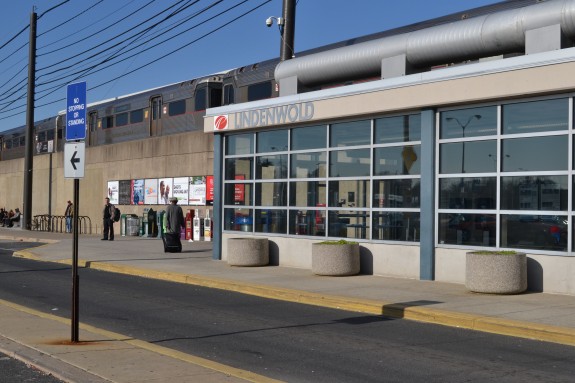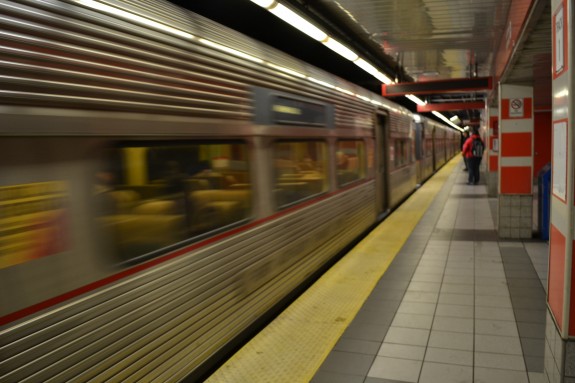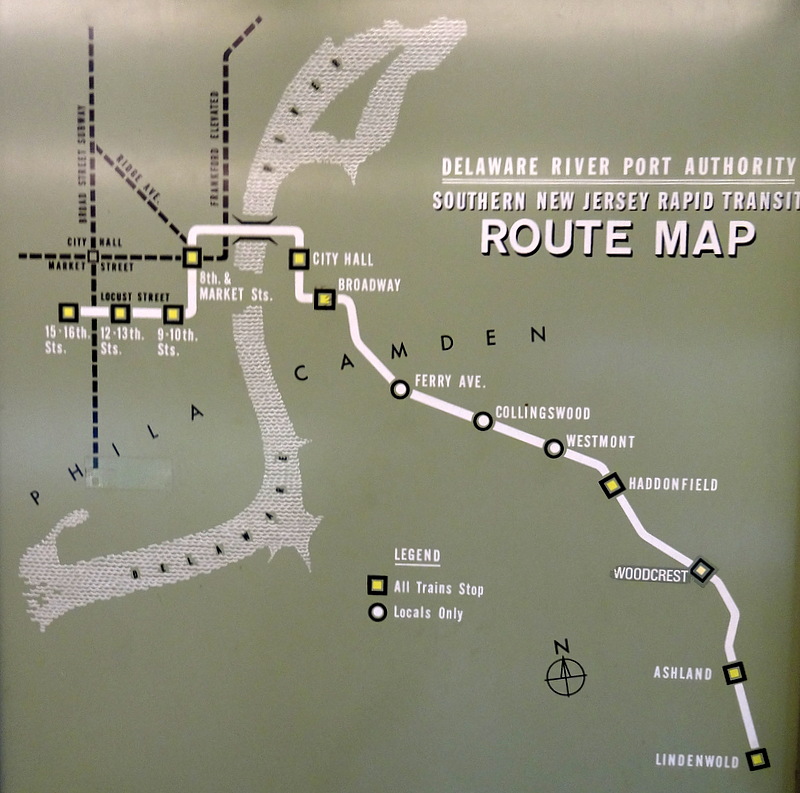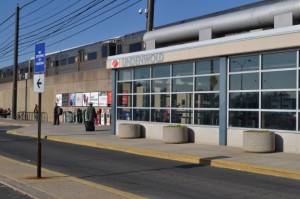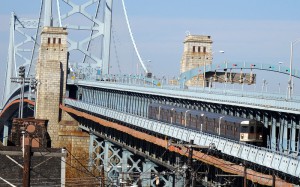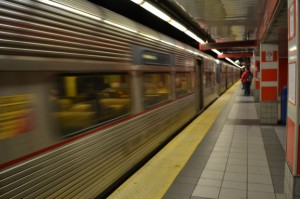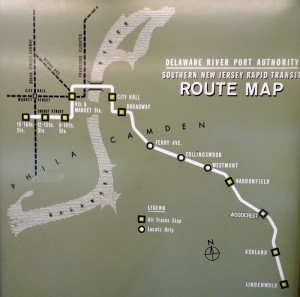PATCO
By John Hepp
Essay
The Port Authority Transit Corporation (PATCO) Speedline combined two sets of underutilized transit infrastructure to create a groundbreaking model for regional passenger transportation when it opened in 1969. It was one of Greater Philadelphia’s major public transportation successes of the mid twentieth century. In the early twentieth-first century, however, PATCO struggled to maintain both the infrastructure and relevance of the high-speed rail line from Center City Philadelphia and Camden to Lindenwold in suburban Camden County, New Jersey.
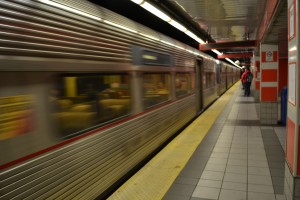
The earliest roots of the PATCO Speedline trace back to the passenger services of the Philadelphia region’s two dominant railroads, the Pennsylvania and the Reading. In the late nineteenth century, both systems ran extensive commuter rail operation in southern New Jersey radiating from Camden with ferry connections to Philadelphia. Many communities, such as Haddonfield, became early railroad suburbs. By the early twentieth century, however, the railroads began to cut back on this service because of competition from streetcars, buses, and automobiles. The completion of what is now known as the Benjamin Franklin Bridge in 1926 sped this decline. The railroads reacted by discontinuing more trains and, eventually in 1933, merging their southern New Jersey systems into one jointly owned company. Despite this combination, commuter train service continued to falter.
The other key portion of what became PATCO was the Bridge Line, a subway that ran between Eighth and Market Streets in Philadelphia and central Camden (crossing over the bridge). Opened in 1936 by a predecessor of the Delaware River Port Authority, the line was owned by the bridge authority but operated initially by Philadelphia Rapid Transit (and later the Philadelphia Transportation Company). In 1951, the long-delayed Locust Street subway in Philadelphia opened and was integrated into the Camden line. The Bridge Line operated well under capacity for most of its independent existence.
In 1951, Pennsylvania and New Jersey created the Delaware River Port Authority, and among its charges was the creation of an integrated passenger rail system serving Philadelphia and its New Jersey suburbs. Initially the PATCO system was to consist of three lines with a new tunnel under the Delaware River, but by the 1960s the decision was made to construct only one of those lines and incorporate the existing Philadelphia to Camden subway into the system; both were cost-savings measures. The route from Camden to Lindenwold was built on the right-of-way of the railroad to Atlantic City (which had been one of the region’s earliest commuter lines).
Opened in 1969, the PATCO Speedline was an immediate success. It was also a model of transit innovation: The trains were among the first to be operated by computer, the line used an innovative advanced fare collections system, and all suburban stations incorporated park-and-ride facilities or coordinated local bus connections. Initially carrying 21,000 riders daily, by the early twenty-first century the number had increased to 38,000. New stations and additional rail cars subsequently allowed ridership to increase. Although most development in southern New Jersey followed the highway system during this period, the PATCO Speedline contributed to the region’s economic growth in two key ways. The park-and-ride lots drew suburban commuters from a broad area around the line, and the coordinated rail-bus schedules served both traditional and reverse commuters in the region.
Despite this success and various studies advocating either the extension of the existing line or the construction of one of the other proposed spurs, the PATCO Speedline has not expanded, largely due to high construction costs and local opposition. The next addition to local rail transportation in southern New Jersey, the River Line, opened in 2004, was not designed to coordinate well with the PATCO system. In the early twenty-first century, PATCO struggled to maintain its equipment and stations and faced decreasing rider satisfaction.
John Hepp is Associate Professor of History and co-chair of the Division of Global History and Languages at Wilkes University in Wilkes-Barre, Pennsylvania. He teaches American urban and cultural history with an emphasis on the period 1800 to 1940.
Copyright 2014, Rutgers University
Gallery
Backgrounders
Connecting Headlines with History
- PATCO subway station to be reopened (WHYY, July 13, 2009)
- Ben Franklin Bridge track work means summer of discontent for PATCO riders (WHYY, May 14, 2014)
- PATCO construction to linger through summer (WHYY, May 30, 2014)
- More delays in store for commuters as PATCO fixes tracks, signals (WHYY, February 6, 2015)
- Is Philadelphia underestimating how many will come to see Pope Francis? (WHYY, June 17, 2015)
- PATCO readies rail passes for pope's visit (WHYY, July 16, 2015)
- Unlike most railroads, SEPTA and Amtrak on pace to implement Positive Train Control by end of year deadline (WHYY, August 10, 2015)
- Rider rejoice! PATCO returns to regular schedule as track work winds down (WHYY, January 1, 2016)
- Freedom is the Key: PATCO fare cards will work on SEPTA (WHYY, April 20, 2016)
- PATCO commuters experience the new Franklin Square stop for the first time (BillyPenn/WHYY, April 4, 2025)
